1909 – 1912
Architect: Hugo Kaiser
Landsberger Strasse 122-132, Munich, Germany
The former Munich Main Customs Office is a building complex dating from the years 1909 to 1912 at Landsberger Straße 122-132 in the Schwanthalerhöhe district of Munich, Germany.
The building was designed by the royal government and building assessor Hugo Kaiser.
The extensive building complex housed the main customs office of the city of Munich until 2004.
The buildings were constructed in a combination of late Art Nouveau and reform architecture.
Background
The state of Bavaria already had a modern financial administration with a general customs and toll directorate since 1807. In 1874, Munich’s main customs office was moved to a building designed by Friedrich Bürklein on Bayerstrasse near Munich’s main train station.
Due to an upswing in long-distance trade and a new customs law of 1906, the main customs office no longer met the demand. An expansion on the property was not possible. Therefore, the government commissioned a new building for the main customs office in Munich in 1908.
The design and model by Hugo Kaiser were approved by Prince Regent Luitpold in 1908. The buildings were erected from 1909 to 1912 and inaugurated by his son Prince Ludwig on July 1, 1912.
Construction
The warehouse and administration building were of reinforced concrete skeleton construction and were among the first reinforced concrete buildings of this size in Europe.
The reinforced concrete structures were built by the Munich construction companies Gebr. Rank and Heilmann & Littmann, the wrought iron work came from F. F. Kustermann.
The heating system came from Eisenwerke Kaiserslautern. Cranes were supplied by Wilhelm Spaeth Maschinenfabrik in Nuremberg and Georg Noell & Co. in Würzburg. The pneumatic tube system was built by Alois Zettler, and other technical installations came from Siemens-Schuckertwerke.
Building Complex
The approximately 35,000 m² site was covered with 14,000 m² of floor space.
The entire complex comprises the administrative building, the 180 m long warehouse building adjoining at right angles to the north and running to the west, the customs technical testing and training institute set off to the east, and three blocks of flats for employees to the south on Landsberger Strasse.
Administrative Building
The administrative building, the actual customs office, is oriented in a north-south direction and has a show facade with a convex gable and clock tower.
The front of the building is formed by a transverse office wing, behind which is the central counter hall. It is 35 m long, 14.5 m wide and reaches 14 m high over three floors.
The counter hall is characterized by a barrel vault with massive frame trusses made of reinforced concrete. The ceiling surfaces are decorated with coffered stucco.
Warehouse
Behind the administrative building, across the railroad tracks, is the warehouse wing. It has four main floors and, including the roof and cellars, a total of nine floors with a combined storage area of about 30,000 m².
The first floor was used for customs clearance, the upper floors were used as bonded warehouses.
In the eastern third, the dome of the 45 m high light shaft interrupts the massive gable roof. It overhangs the ridge of the warehouse by 18 m.
Residential Complex
The four-story residential blocks on Landsberger Strasse contained 47 apartments for customs office employees.
They were graded according to rank between seven rooms for the head of the office, four- to five-room apartments for customs inspectors and three-room apartments for other officials, supervisors and machinists.
All apartments had kitchens with gas stoves and central heating. The more upscale apartments had private bathrooms and electricity. The courtyard between the residential buildings was landscaped and equipped with a children’s playground.
Artwork and Decorations
The sculpture work on the facades and inside the administration building was done by Georg Albertshofer and Julius Seidler.
In the vestibule and counter hall, there are wrought decorative grilles, carved stair railing supports, and counter fronts of polished shell limestone.
Other areas were adorned with stenciled wall decorations, with palmette friezes, beadwork, and coffers dividing the walls.
Monument Protection and Renovation
The main customs office has been a listed building since 1976.
The building of the customs testing and training institute underwent general renovation from 2011 to 2014 after the testing institute’s laboratories moved to a new building near Munich Airport.
Current Use
Customs offices and the Federal Real Estate Agency moved into the vacant offices. The attached residential buildings are rented out by the Bundesanstalt für Immobilienaufgaben, preferably to federal civil servants.

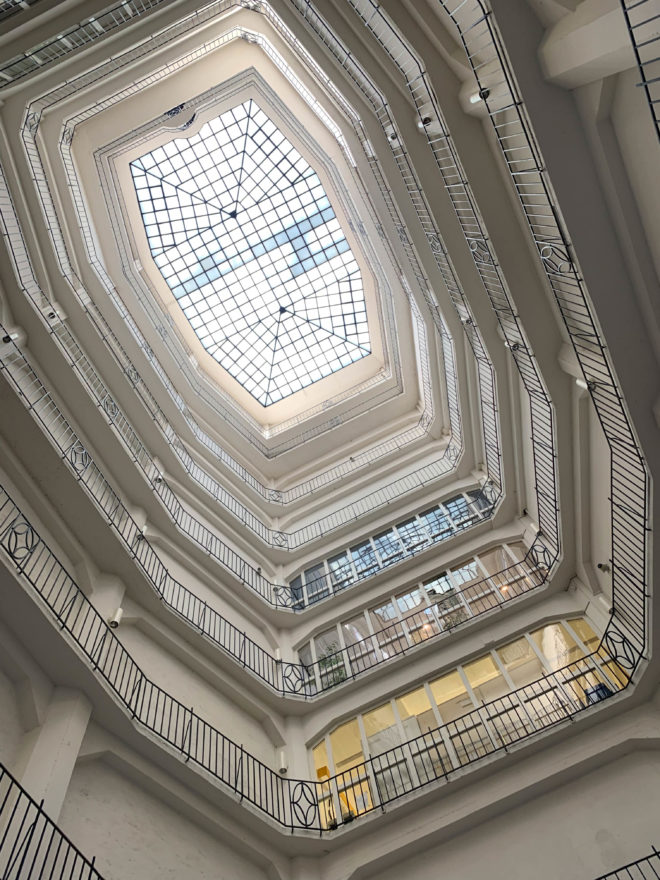
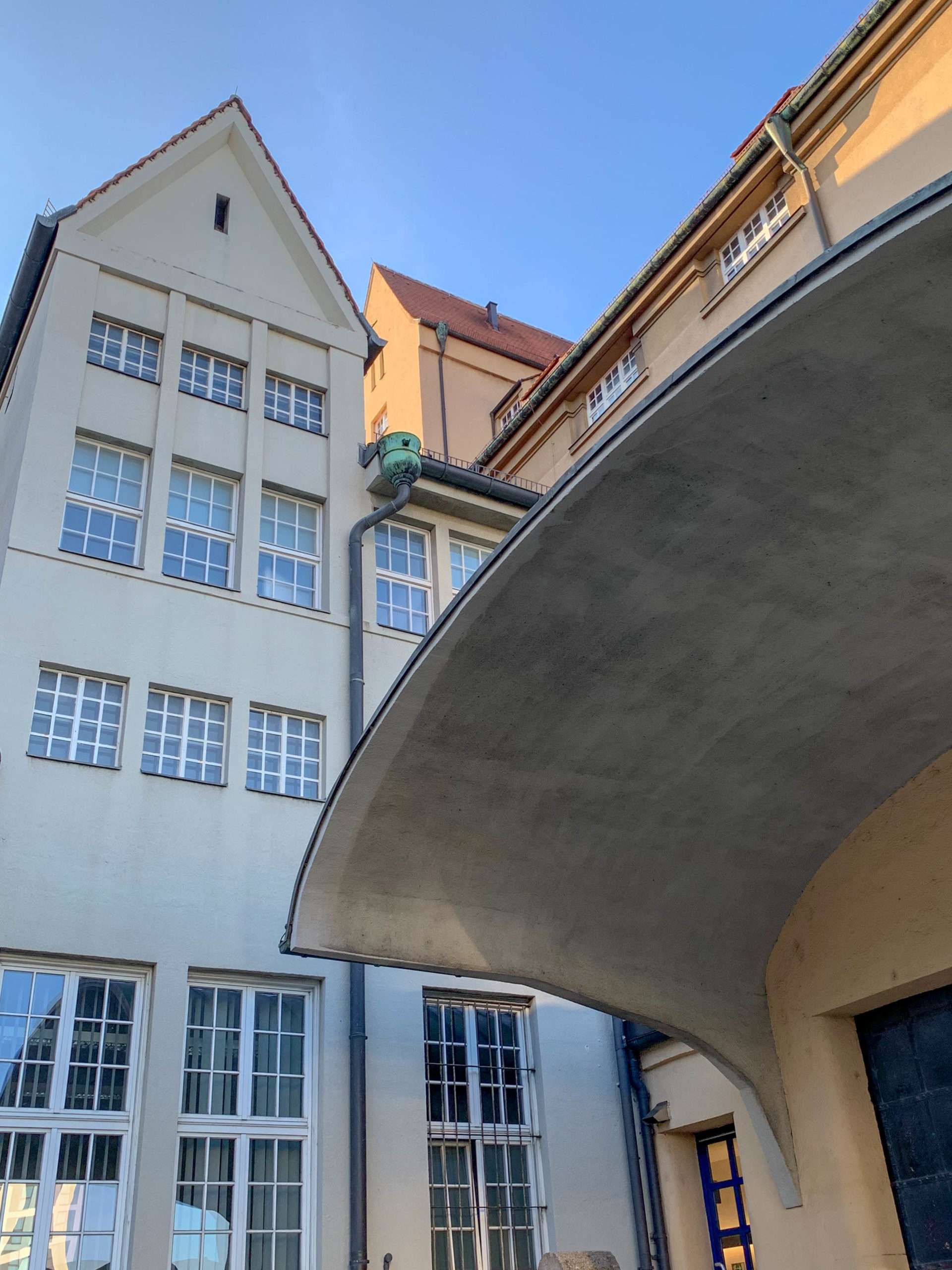
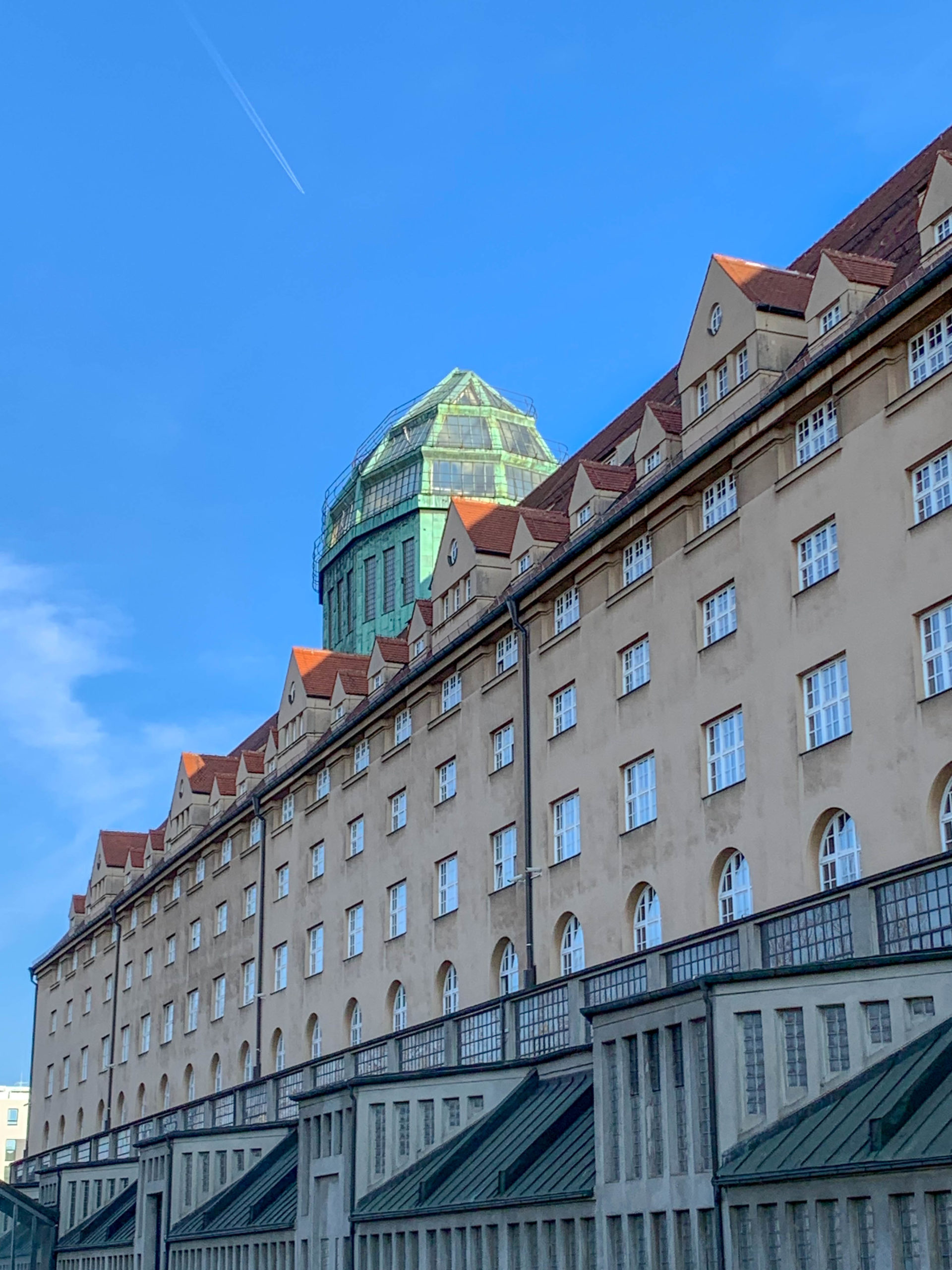
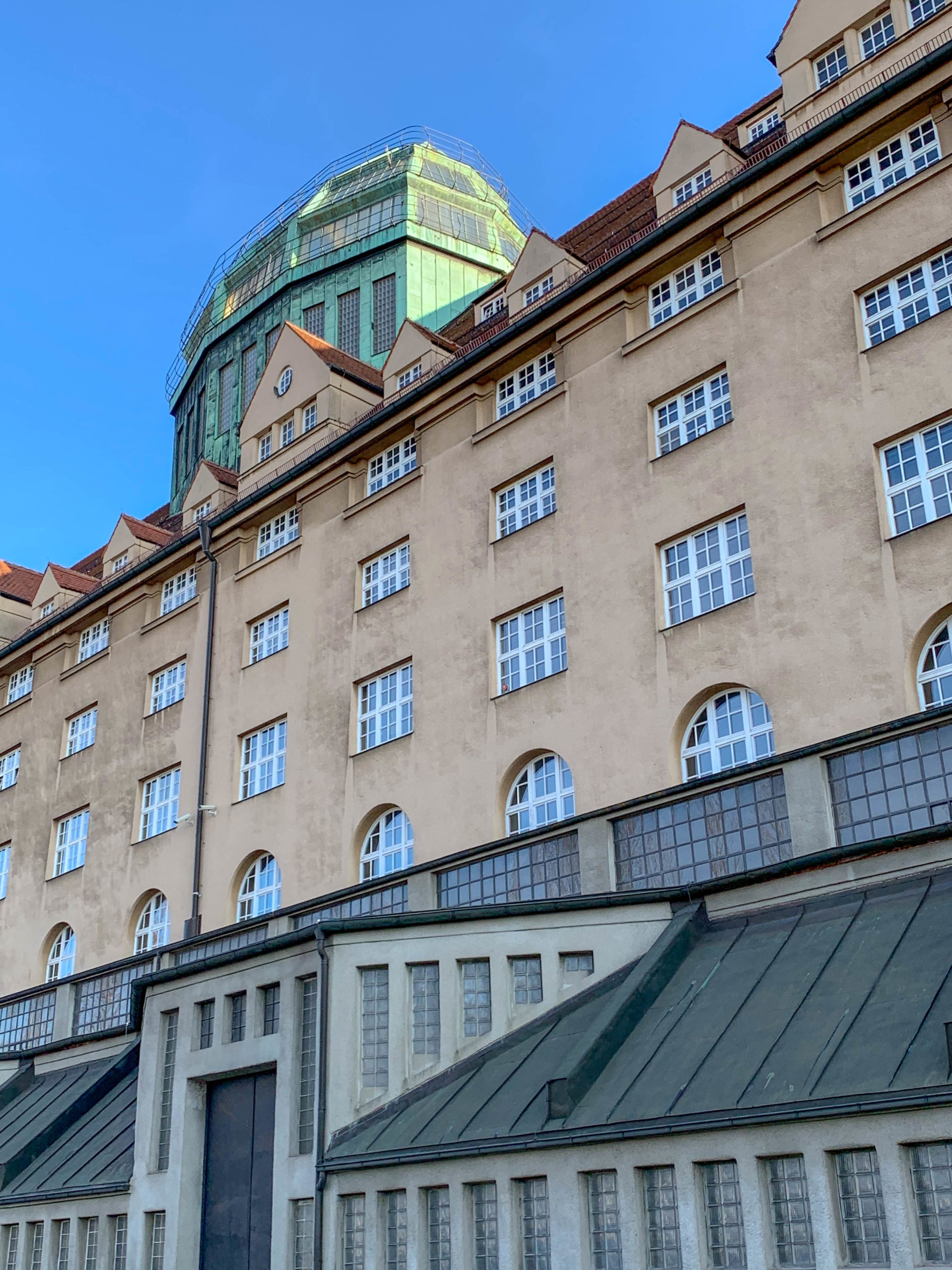
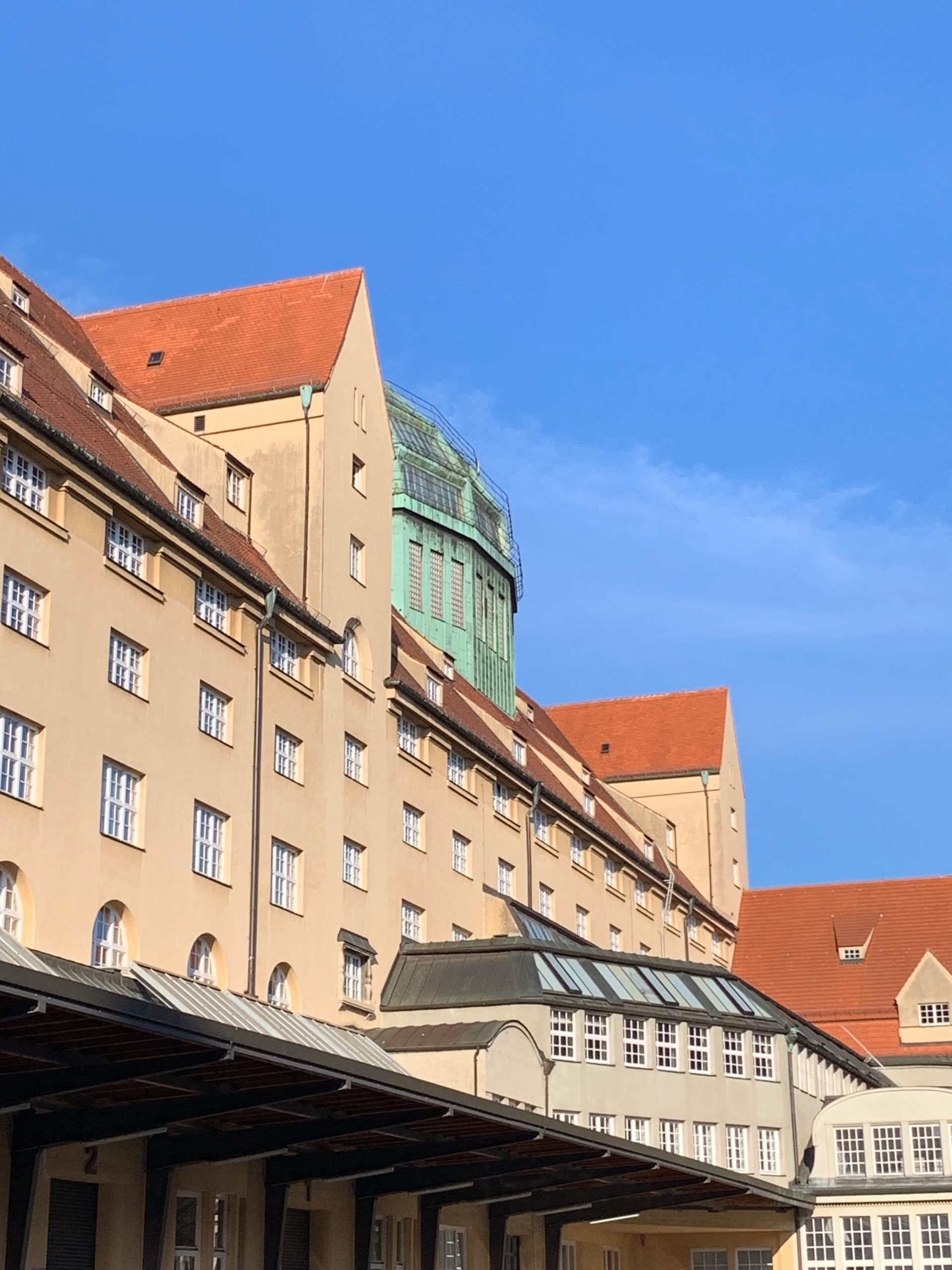

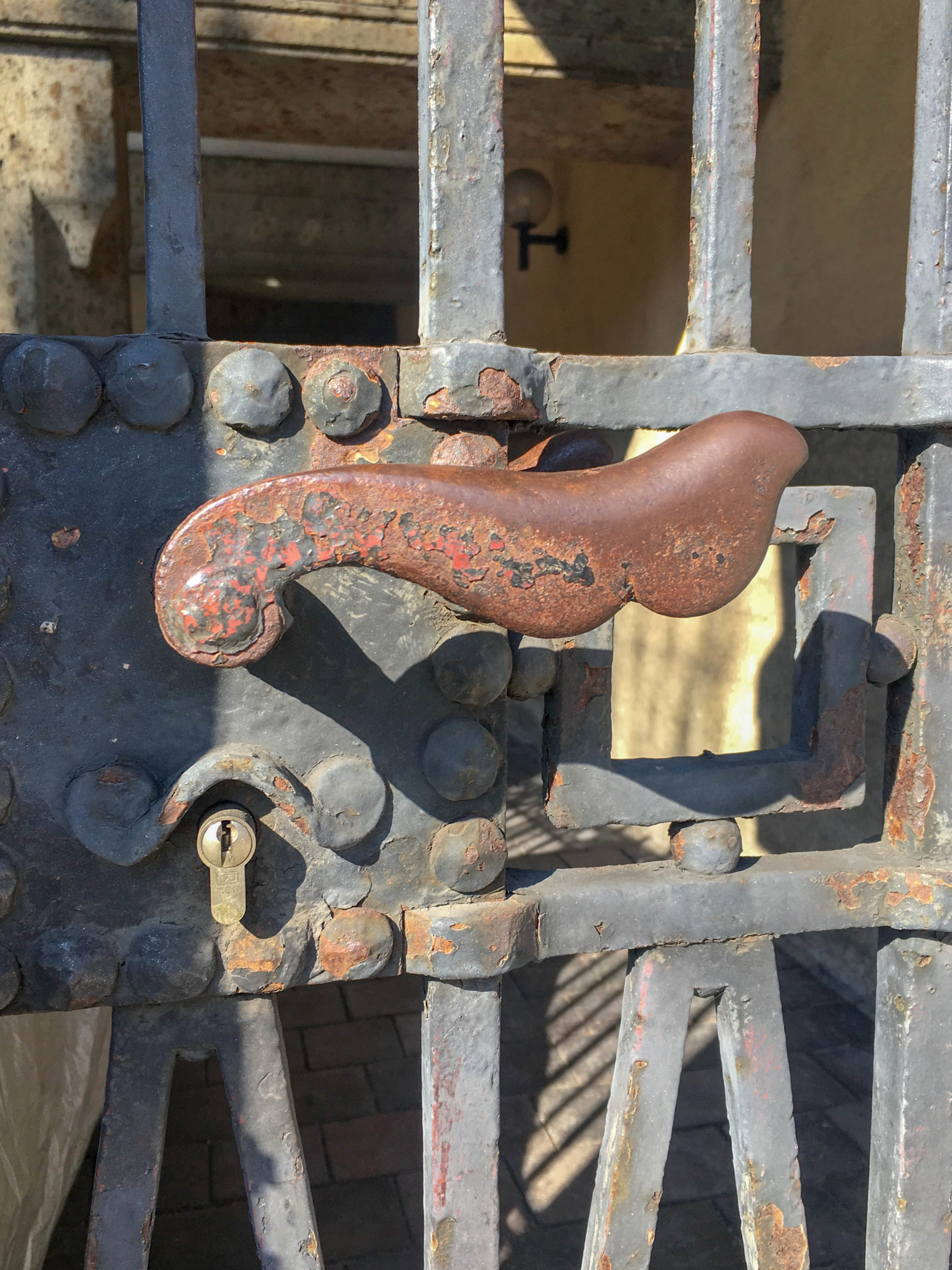

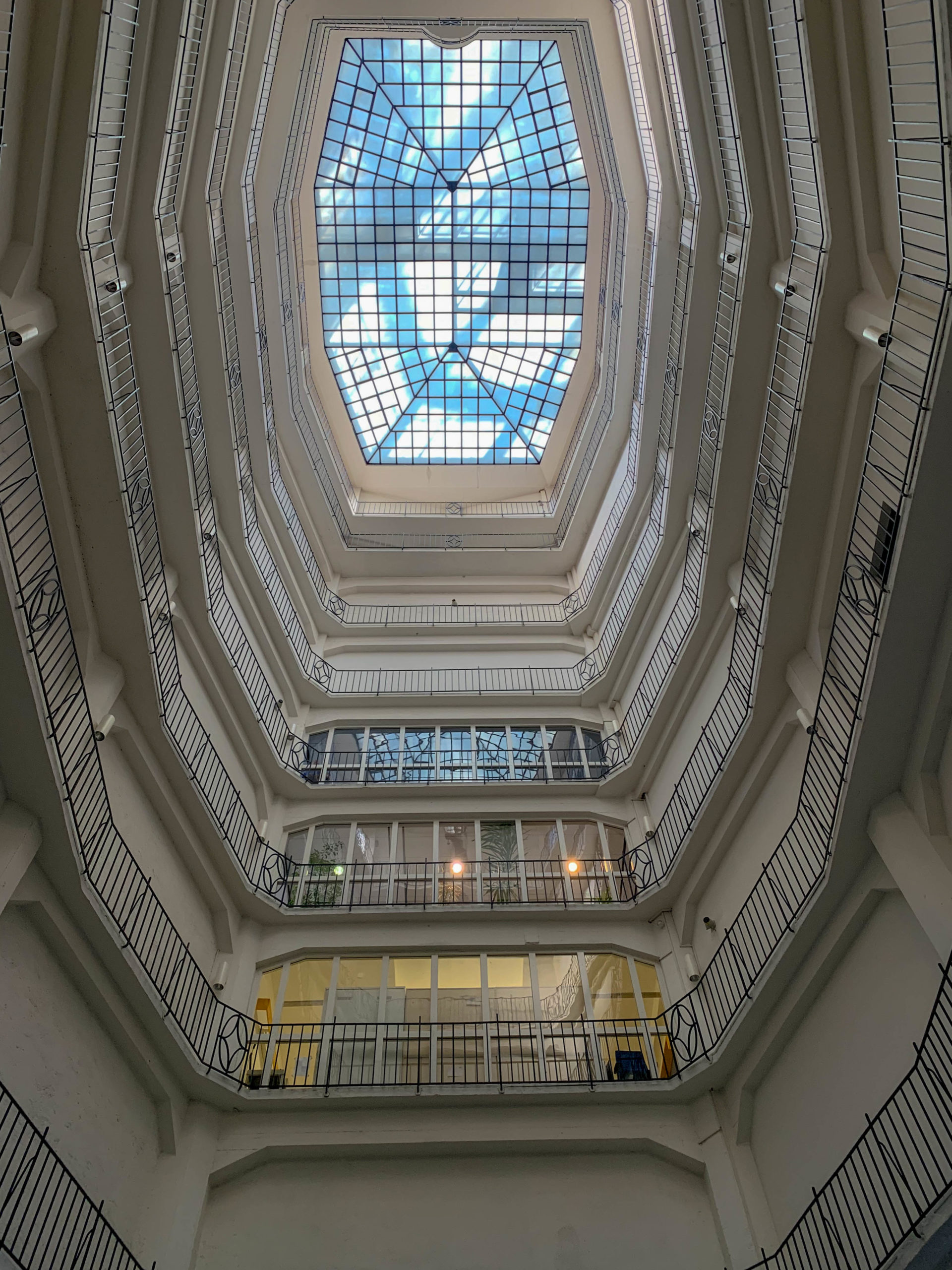
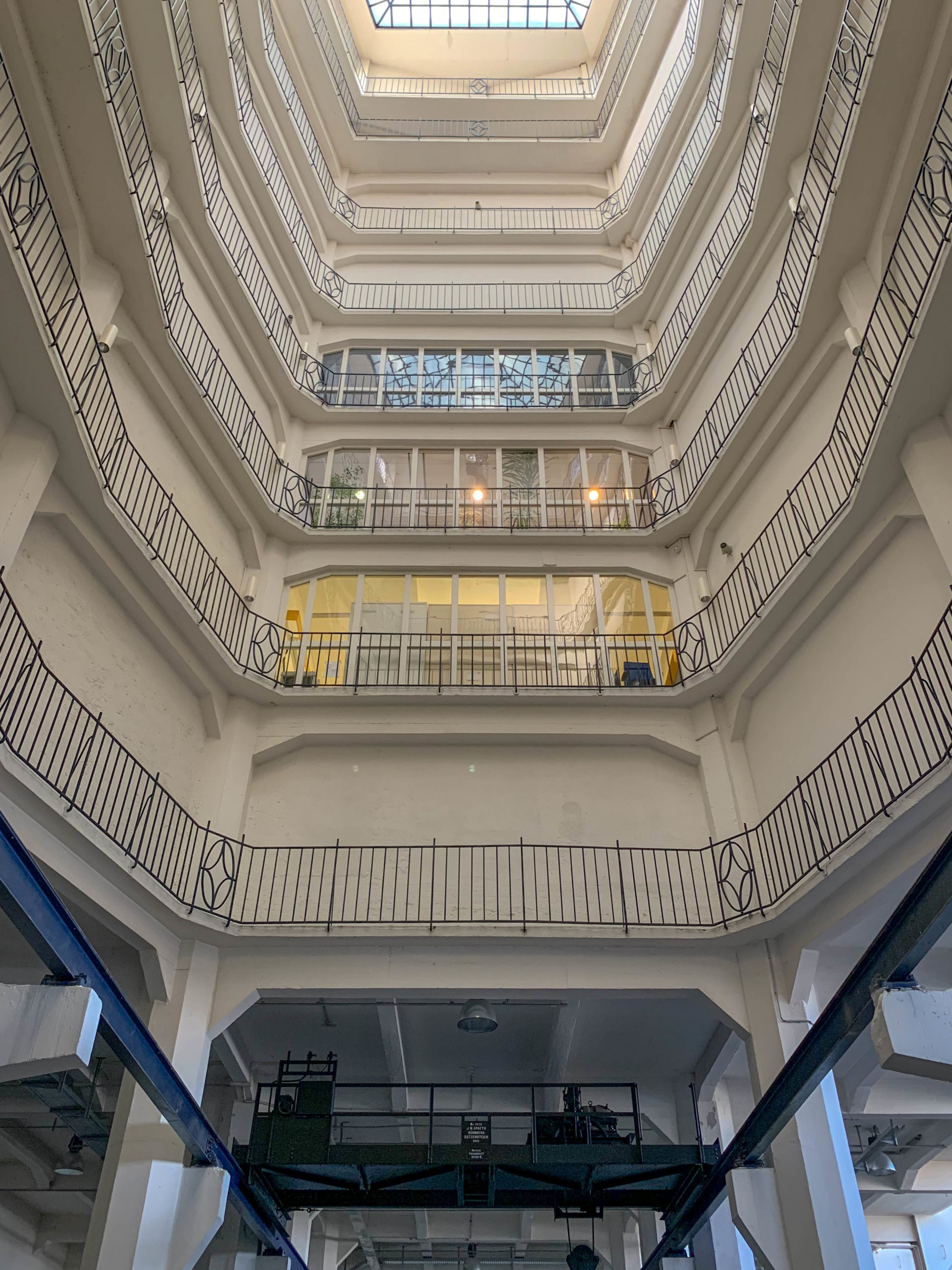
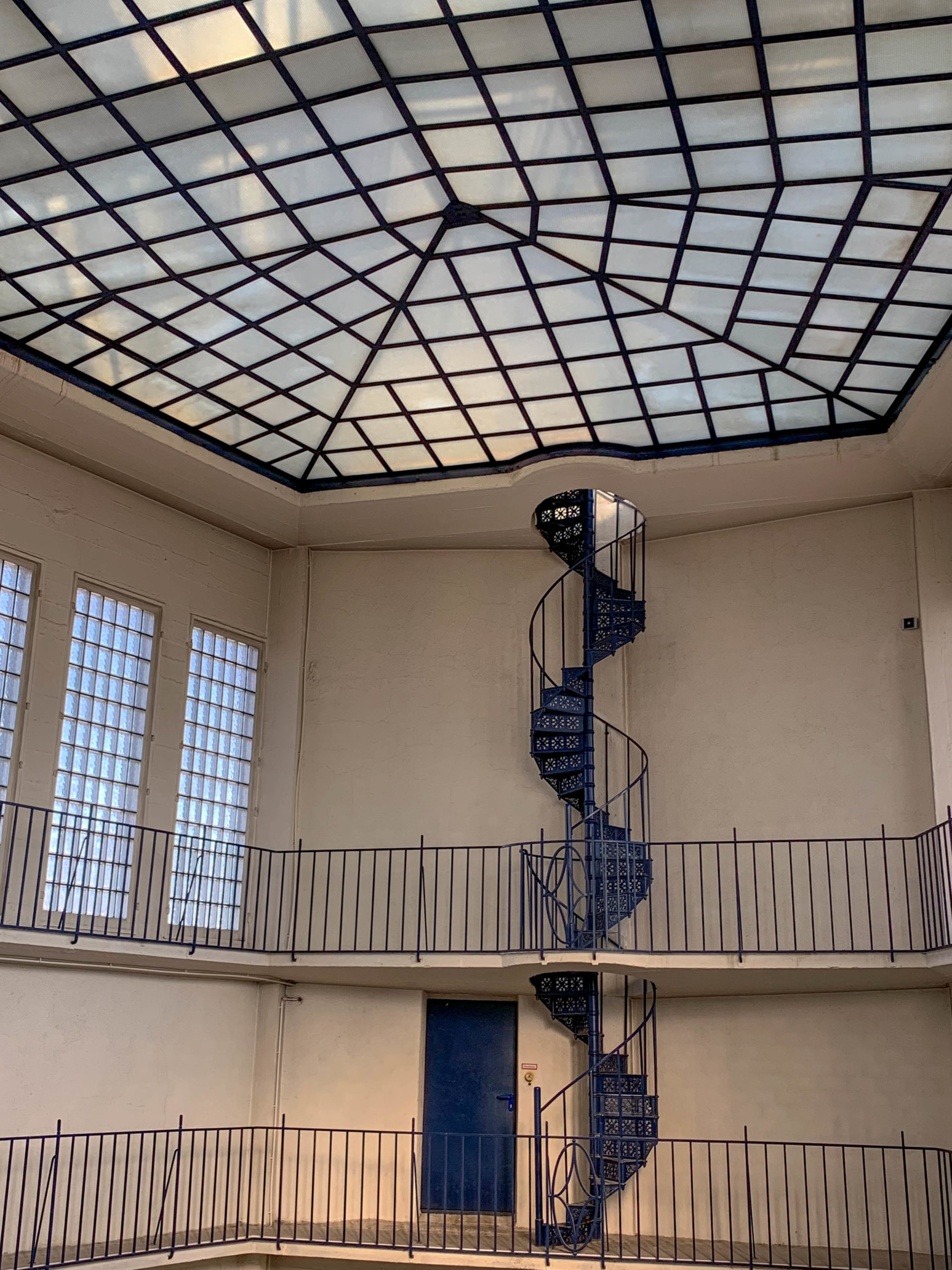
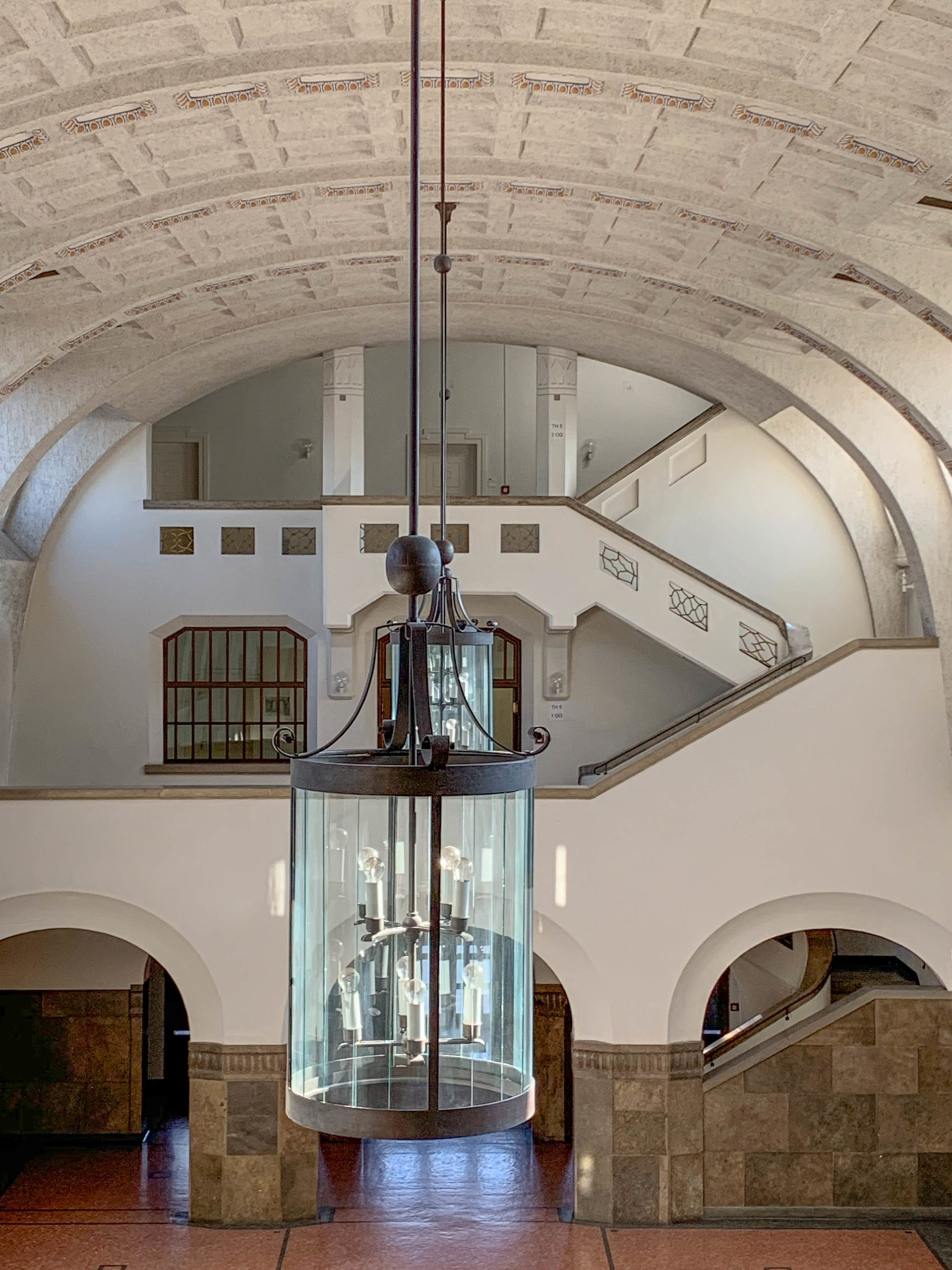
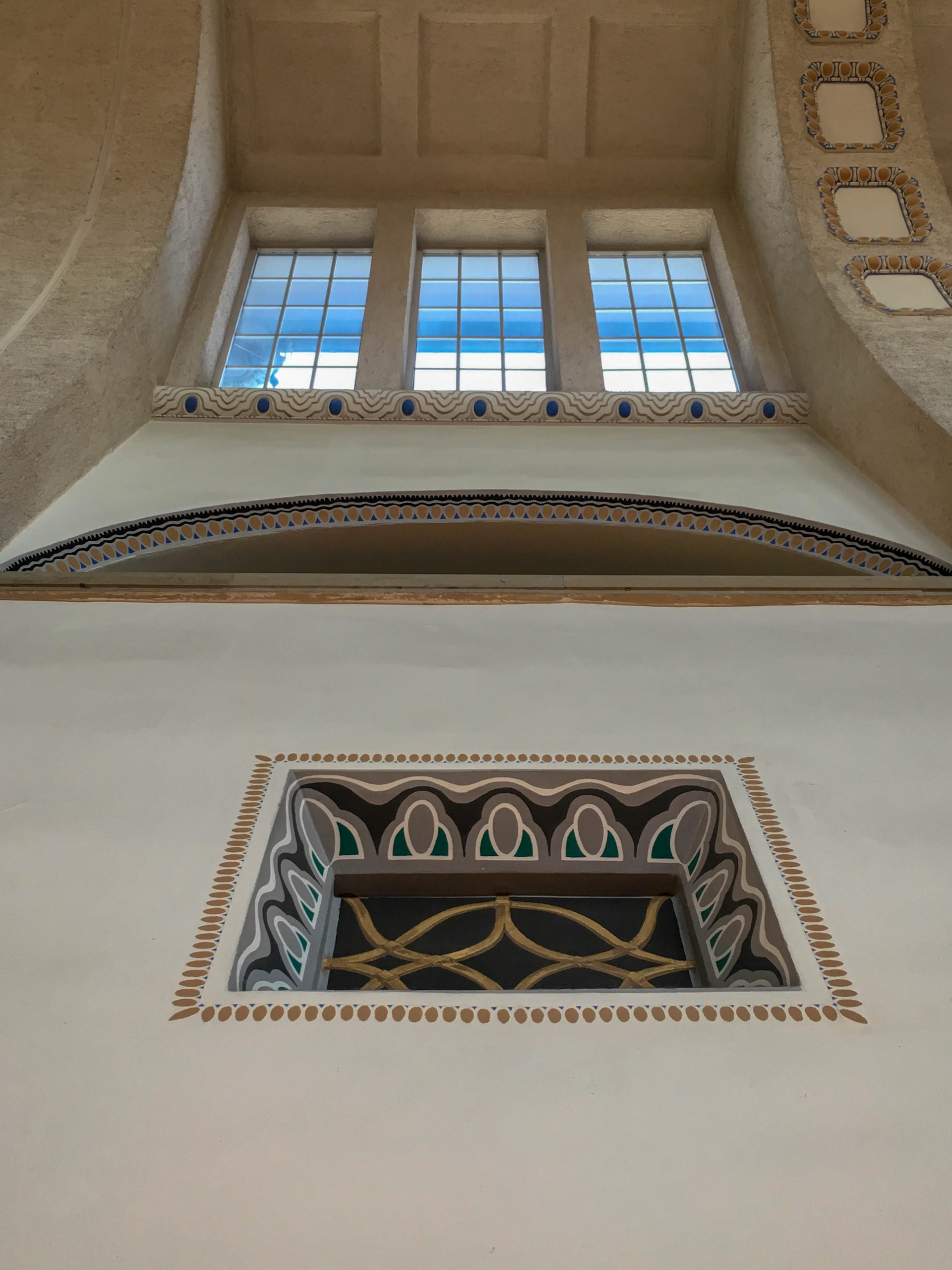
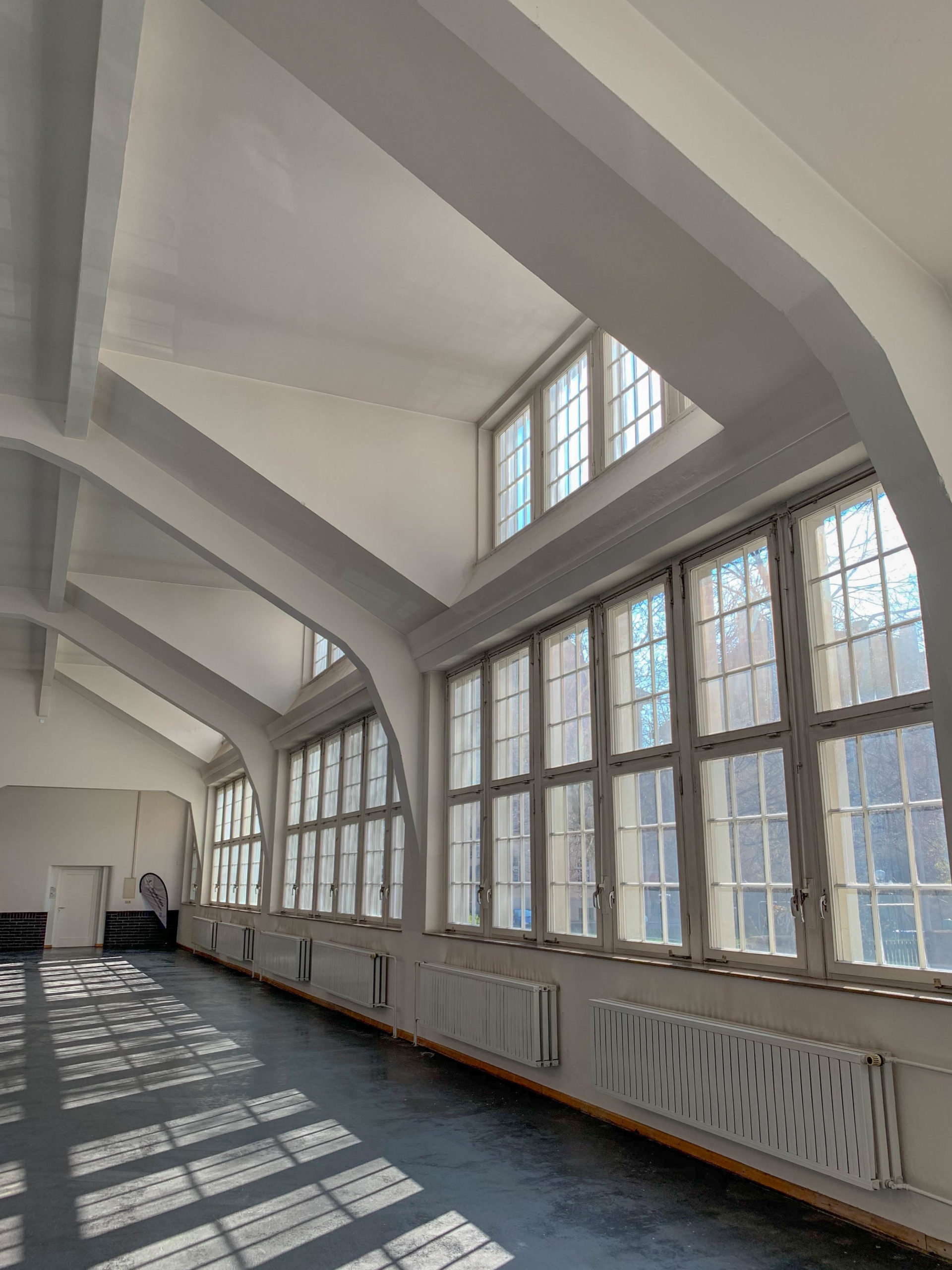
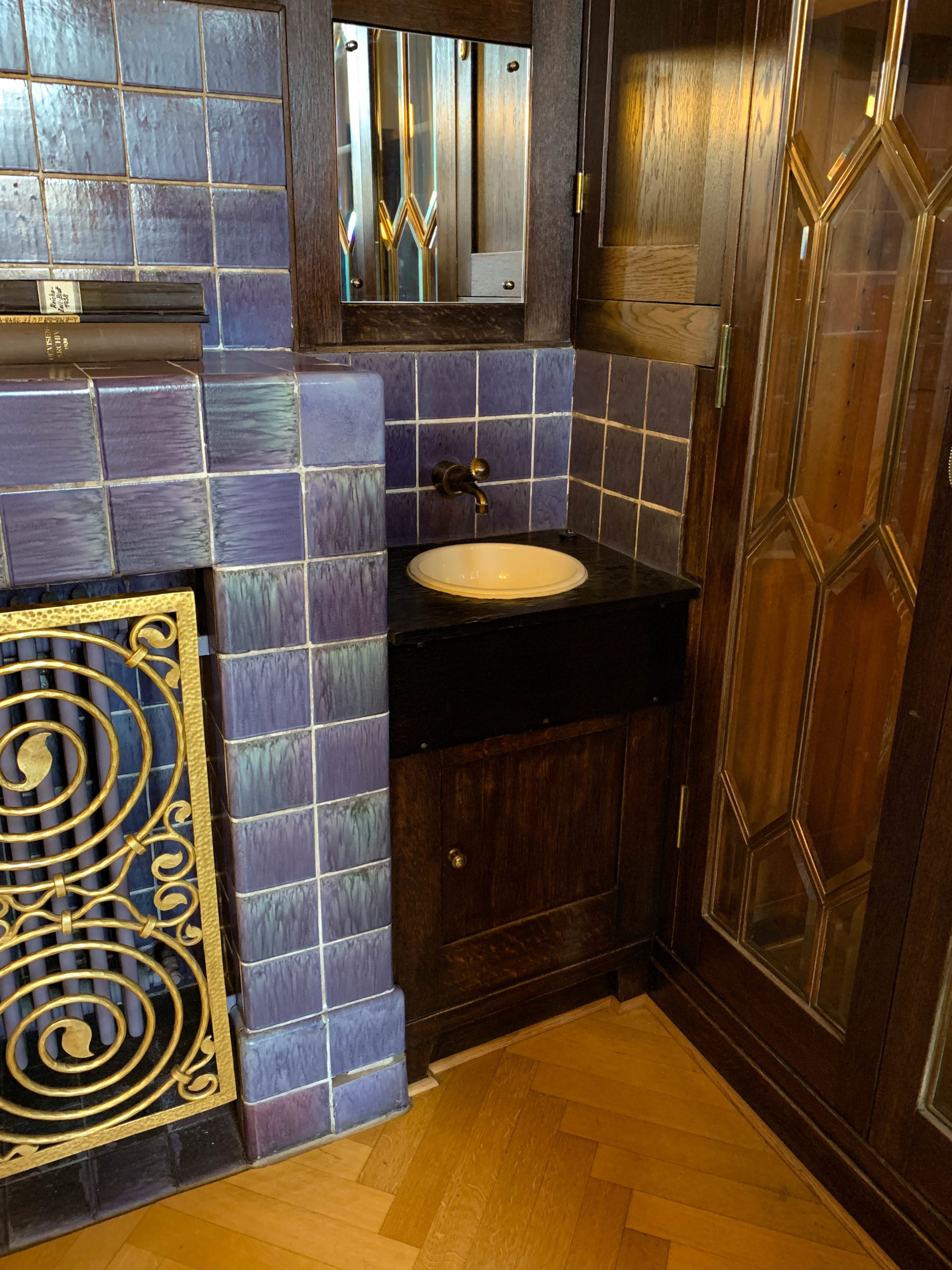
Taut’s crystal pavilion – 2 years before !